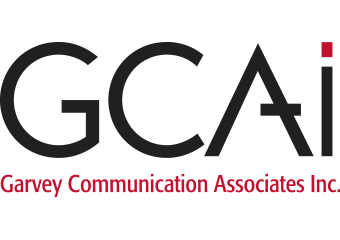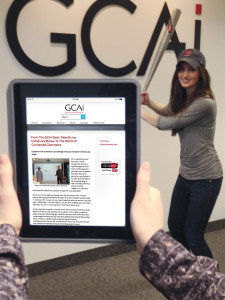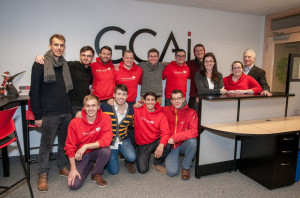From The GCAi Desk: Social Media Is The Knight In Shining Armor
 No one wants to think back to 2007 these days. For us, it is because of embarrassing memories of junior prom dresses and tuxes, but for the long-in-the-tooth PR and Media pros it is because that was the start of Armageddon. Sure, collapse of both the PR/Advertising and newspaper publishing world was still slightly over the horizon, but the recession that came to bear that year was the writing jumping off the wall and becoming all too true: The End Is Near.
No one wants to think back to 2007 these days. For us, it is because of embarrassing memories of junior prom dresses and tuxes, but for the long-in-the-tooth PR and Media pros it is because that was the start of Armageddon. Sure, collapse of both the PR/Advertising and newspaper publishing world was still slightly over the horizon, but the recession that came to bear that year was the writing jumping off the wall and becoming all too true: The End Is Near.
So, why can we sit here today and lovingly gaze out the window as we amble through the day’s PR projects knowing that our brethren in media are somewhat safely ensconced as well? It is because Social Media became our knight in shining armor and delivered audiences to us in a way that we never saw as possible. Moving with painfully slow determination, PR and media pros found that not only could they reach whom they wanted to reach, when they wanted to reach them, but they also found that they did not need each other anymore. Yes, the media hack vs. PR flack war was as over as use of that dated cliché was (we had to Google it!).
But, don’t take the reasoning of a couple of millennials as proof – look at the data. Content distribution through Social Media is insanely measurable. Add “boost” or “sponsorship” to your post, a range of paid distribution options that allow you to target very specific audiences, and suddenly likes, clicks and other engagement actions are flying your way – provided your content doesn’t suck. Yes, in this new content-distribution-through-Social Media world, the same “Content Can’t Suck” rule that applied to old, dirt-world media is still in effect.
Let’s start there. How do you create content that doesn’t suck? Know your audience and write for them. This is not a mass media play. The world may not value your content, but if you create it with a specific audience in mind, they will. Content that clicks, pun intended, is valued by those targeted audiences. They find it helpful and/or informative. That means you are providing information on how to, or what not to, but not the text equivalent of a selfie “hey look at me.” Too often, brands focus on the brag rather than what their audiences want.
Also, content is not limited to text either. When we say “content” we mean text – headers, decks, body copy AND images, video, infographics, etc. People are visual. Use a great visual or even a short video to help tell your story. Don’t overload the visual however. A small bit of text is okay – as long as it doesn’t distract from the visual’s ability to tell your story.
Good content gets rewarded. Recently, Facebook announced that brands that created highly relevant ads based on their target audiences would be rewarded with increased reach and even more cost-effective pricing. Content that is compelling and informative also gets shared. People like to be smart but love to be perceived as being smart! Can your content help them with the latter objective? If so, they are likely to share it.
Pricing? Yes. Sorry, but these days, publishing is pay to play. If you want “free media,” keep faxing those press releases. Facebook offers a variety of paid promotion options, and each comes with some nifty targeting options. You can sponsor or boost a story by adding promotional dollars. If you are really targeting your audience, this spend will not be as painful as you might think, given the high costs of print, radio and television ads. Filtering options include geo-targeting specific markets down to the zip code, demographics, interests (based on profile information and posts) and more.
Let’s look at promoting content through Twitter shall we? Twitter allows you to promote a tweet. You start by creating a good tweet that perhaps announced something unique and special. Be sure to add an image or a video because either will drive audience engagement. Then, use the promoted tweet targeting options to find and lock in your exact audience. Once you launch, your message will appear in the home time line of the audience you targeted.
LinkedIn has also jumped into the promoted content game and now allows you to promote your updates. Similar to Twitter, promoted content on LinkedIn can be highly targeted, which allows you to use location, company, industry, job title, job function, degree, school or group all to help you home in on the exact audience you want your content to reach. Your content should be focused and visually appealing, with relevant photos, a short link and a title under 70 characters.
YouTube videos are also a great ways to tell a story. Use of video is substantially growing. PR pros are using video to show an aspect of the story such as an interview and it has the added benefit of allowing users to consume the information in another media type than text. We are all visual learners. So watching a video is sometimes better than reading about the same subject. You can increase the odds that your video will be searched for and found by adding keywords to your headline and caption along with a hyperlink to a supportive landing page on your website if one is available. You also can promote your video through Google AdWords, but you might want to seek out a Google Partner to help you with that (hint: we are one J).
The road ahead? Paid posts on Instagram, the fastest-growing Social Media Platform, SnapChat for business, and more (not going to mention Meerkat until it hits $100MM in valuation). Social Media is always changing, so you will need to research night and day for the latest best practices. Or you could follow us on Twitter, Instagram and LinkedIn, like us on Facebook, or sign up for #GCAiPlanet, our weekly newsletter. It’s your choice.
Authors: Darcy Fortune, SEO PR Analyst; James Garvey, Social Media Marketing Analyst


 Spring is finally here, and so is baseball season. Those of us in the
Spring is finally here, and so is baseball season. Those of us in the 

 John Garvey is in the business of making connections, which is how a small team of marketing students at Western New England University wound up launching an online fund-raising campaign for a small, Russian robotics firm.
John Garvey is in the business of making connections, which is how a small team of marketing students at Western New England University wound up launching an online fund-raising campaign for a small, Russian robotics firm.  Dan Koval is one of our favorite entrepreneurs. We met him at Valley Venture Mentors and continued to work with him at MassChallenge. Along the way, we learned that Dan could teach us as much about innovation as we could teach him about digital marketing. Now, in this MassLive special feature, you too can learn some of his not so secret secrets!
Dan Koval is one of our favorite entrepreneurs. We met him at Valley Venture Mentors and continued to work with him at MassChallenge. Along the way, we learned that Dan could teach us as much about innovation as we could teach him about digital marketing. Now, in this MassLive special feature, you too can learn some of his not so secret secrets!  If you want to create an innovation pipeline for your business, hang around with innovators. It’s that simple and, at GCAi, we know it works. Given that our clients are not interested in what we did yesterday, but instead want to know all about tomorrow, we need a fresh stream of ideas and inspiration to both inform and invigorate our work. Here is how we do it.
If you want to create an innovation pipeline for your business, hang around with innovators. It’s that simple and, at GCAi, we know it works. Given that our clients are not interested in what we did yesterday, but instead want to know all about tomorrow, we need a fresh stream of ideas and inspiration to both inform and invigorate our work. Here is how we do it.

 There’s no question, when I am in Ireland, my favorite beer is Guinness. Well, let me clarify that a bit, if I am in Dublin, my favorite is Guinness. If I am to the south, say in Cork, I am ordering a Murphy’s. And if I am in the west, I will be looking for a
There’s no question, when I am in Ireland, my favorite beer is Guinness. Well, let me clarify that a bit, if I am in Dublin, my favorite is Guinness. If I am to the south, say in Cork, I am ordering a Murphy’s. And if I am in the west, I will be looking for a 
